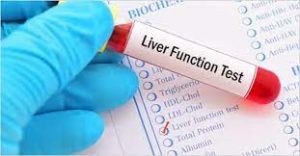Introduction:
The ALT SGPT test, also known as alanine aminotransferase or serum glutamic pyruvic transaminase, is a blood test commonly used to evaluate liver function. This article aims to provide a comprehensive understanding of the ALT SGPT test, including its purpose, procedure, and interpretation.

I. What is the ALT SGPT Test? A. Definition and Function:
1. ALT and Liver Health:
ALT is an enzyme found predominantly in liver cells. When liver cells are damaged or injured, ALT is released into the bloodstream, leading to increased levels in the blood.
2.Role of ALT SGPT Test:
The ALT SGPT test measures the amount of ALT in the blood, indicating the extent of liver damage or dysfunction.
B. Differences between ALT and AST:
ALT and AST (aspartate aminotransferase) are both liver enzymes, but they are found in different parts of the body. ALT is primarily found in the liver, while AST is present in the liver, heart, muscles, and other organs. Comparing ALT and AST levels can help determine the specific source of liver damage.
II. Purpose of ALT SGPT Test:
A. Detecting Liver Damage:
1. Hepatitis: Elevated ALT levels are commonly associated with viral hepatitis, which is inflammation of the liver caused by viral infections such as hepatitis A, B, or C. 2. Cirrhosis: ALT levels can be elevated in cirrhosis, a condition characterized by extensive scarring of the liver due to chronic liver disease. 3. Nonalcoholic fatty liver disease (NAFLD): ALT levels can be elevated in NAFLD, a condition characterized by the accumulation of fat in the liver, often associated with obesity and metabolic disorders.
B. Monitoring Liver Disease:
1. Viral Hepatitis Treatment:
ALT levels are monitored during antiviral treatment for viral hepatitis to assess the effectiveness of the therapy.
2. Liver Transplant Evaluation:
ALT levels help evaluate the severity of liver disease and determine the need for liver transplantation.
3. Drug-Induced Liver Injury:
Monitoring ALT levels is crucial when a person is taking medications known to potentially cause liver damage.
III. Procedure of the ALT SGPT Test:
A. Blood Sample Collection:
1. Preparation:
Typically, no special preparation is required for the ALT SGPT test. However, it’s essential to inform the healthcare provider about any medications or supplements being taken.
2. Blood Draw:
A healthcare professional will collect a blood sample from a vein, usually from the arm.
B. Laboratory Analysis:
1. Measuring ALT Levels:
The blood sample is sent to a laboratory, where the ALT levels are measured using automated analyzers.
2. Reference Range:
The reference range for ALT levels can vary slightly between laboratories. However, a typical reference range for adults is 7-55 units per liter (U/L) for men and 7-45 U/L for women.
V. Clinical Significance of ALT SGPT Test:
A. Liver Function Assessment:
The ALT SGPT test serves as a marker of liver function and can help identify liver diseases and disorders. Abnormal ALT levels indicate potential liver damage or dysfunction, prompting further investigation and appropriate management.
B. Disease Progression and Prognosis:
Monitoring ALT levels over time allows healthcare professionals to assess the progression of liver diseases. Increasing ALT levels may indicate worsening liver damage while decreasing levels can suggest an improvement or successful treatment. ALT levels can also provide insights into the prognosis of liver diseases, helping to determine the severity and potential complications.
C. Treatment Monitoring:
For individuals undergoing treatment for liver diseases such as viral hepatitis or drug-induced liver injury, regular monitoring of ALT levels is crucial. Changes in ALT levels during treatment can indicate the effectiveness of therapies and guide adjustments in medications or treatment plans if needed.
Conclusion:
The ALT SGPT test plays a vital role in evaluating liver function and detecting liver diseases. By understanding the purpose, procedure, and interpretation of this test, healthcare professionals can make informed decisions regarding patient care, treatment plans, and monitoring. Regular monitoring of ALT levels helps in the early detection of liver damage, allowing for timely intervention and improved patient outcomes.
